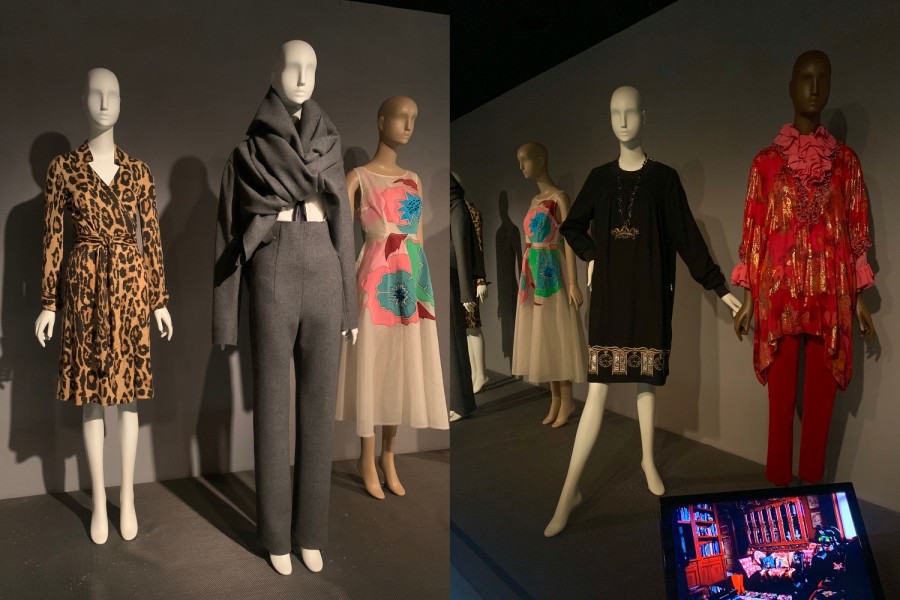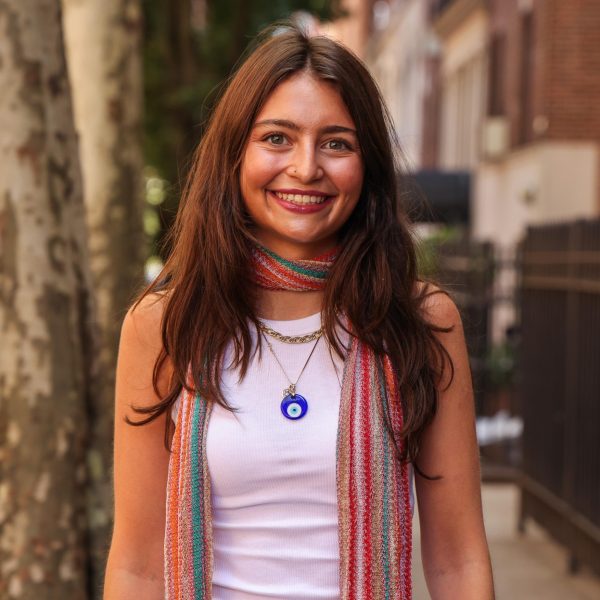FIT’s new exhibit explores the intersection of fashion and interior design
Showcasing designer’s work alongside their living spaces, ‘Designing Women: Fashion Creators and their Interiors’ is on view until May 14.
The Museum at FIT is located at 227 W. 27th St. (Alexa Donovan for WSN)
April 13, 2023
The most recent exhibit at the Museum at the Fashion Institute of Technology emphasizes the bridge between high fashion and interior design. Drawn from the museum’s permanent collection, over 60 pieces created by 40 female designers are displayed alongside photographs and illustrations of the designers’ workspaces and homes.
From apartments and shawls to couture salons and luxurious evening gowns, the exhibition is nothing less than fabulous. Although the 40 featured designers cover a wide range of unique styles chronologically, each has something in common: a personal sense of taste and a passion for design.
Each accessory and piece of clothing is placed closely alongside images of its designer’s creative space, including illustrations by FIT adjunct professor Bill Donovan. This allows viewers to draw connections between the images and the displayed works, adding to their understanding of how each designer’s space reflects the resulting product.
The oldest pieces within the exhibition date back to the 18th and 19th centuries. Particularly astute is the pairing of Jeanne Paquin’s pink silk chiffon “Evening Cape” from 1897 and the 1906 painting “Five Hours at Paquin” by Henri Gervex, which translates to “Cinq Heures chez Paquin.” The pastel-colored artwork of Paquin’s studio is lined with ruffles, intricate carvings and beautiful glasswork. Her stunning evening cape reflects these same aesthetics, tiered with layers of pink silk chiffon ruffles.
The photograph of the Rose Room at the Lucile Couture House depicts an extravagant dressing room, where Lucy Duff-Gordon designed made-to-order clothing for private clients in New York City in 1916. With velvet curtains and couches, a grand vanity and a stunning chandelier, it is no surprise that the accompanying peignoir and tea gown are expertly crafted in all of their sheer, beaded and feminine — yet subdued — glory.
The most colorful section can be found near the end of the exhibition, which displays works from contemporary designers. Anna Sui’s works are shown alongside a large photograph of her clad in a brightly-beaded floral coat standing next to a vibrant bookshelf. The still image is accompanied by a video of her similarly eye-catching home. The pieces chosen to represent her work are excellent: Her gorgeous fuchsia and gold kaftan ensemble is both fun and sophisticated — as is space viewers of the video are brought through in the video. Whether it is Schiaparelli’s bird cage in her perfume boutique serving as the inspiration for an evening coat printed with butterflies or Sui’s dress printed with cabinets that look curiously similar to the ones in her studio, the message is clear: where we work inspires what we do.
This statement is especially true in New York City, one of the fashion capitals of the world.. According to the city’s own website, due to its plethora of talent, retail spaces and design schools, New York City is the most important city for fashion in the United States. The city’s fashion industry employs 180,000 people at approximately 900 companies that bring in nearly $11 billion in total wages. Though there are many examples of space and fashion interacting with each other, Sui is a focal point among her peers, having been coined as “one of New York’s most beloved and accomplished fashion designers.”
It’s no wonder how, in a city full of grand architecture, art and creative citizens, one can channel their imaginative visions into wearable artwork that is so expertly reflected in their workspace.
Contact Alexa Donovan at [email protected].

























































































































































